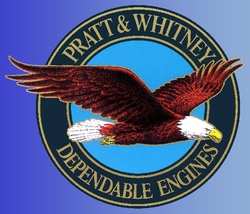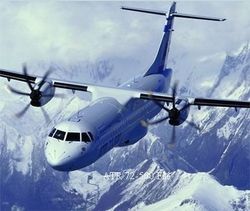Fri, Oct 28, 2022
Dependable Engines Indeed
The regional turboprop is an enigmatic machine—at once underappreciated and indispensable. Passengers balk at the sight of propellers, but persons versed in the dark arts of mechanical and aeronautical engineering know the turboprop design is the most efficient and reliable means by which to convert the chemical energy of Jet-A to the kinetic energy of thrust.

Of the world’s manufacturers of turboprop engines, none boasts a more storied history and demonstrably robust lineup of powerplants than Pratt & Whitney Canada. From the 650 to 2,000-shaft-horsepower PT6 series engines by which the world’s King Air fleet has moved resolutely through nearly six-decades, to the 1,800 to 5,000-shaft-horsepower PW150A mills slung under the slender, high-efficiency wings of Bombardier’s Dash 8 Q400—no aerospace engine concern has powered a wider variety of turboprop aircraft or borne more souls safely across the Earth’s skies than Pratt and Whitney.
On 13 October 2022, the European Aviation Safety Agency (EASA) type-certified Pratt & Whitney Canada’s new PW127XT-M engine for use on ATR’s popular 42 and 72 series regional turboprop aircraft. Boasting advanced materials and technologies, the new engine series affords operators of ATR’s 42 and 72 aircraft families three-percent improvement in fuel-efficiency, twenty-percent reduction in maintenance costs and forty-percent extended time on wing—with engine overhaul intervals scheduled at twenty-thousand-hours.
ATR senior vice president engineering Stephane Viala states: “Receiving EASA type certification is an important step towards entry into service of this new standard engine on our ATR aircraft. ATR teams have been working with our partners at Pratt & Whitney Canada and the authorities to secure certification and move closer to providing customers with even more economical and sustainable powered regional turboprop aircraft.”

Pratt & Whitney Canada vice president sales and marketing Anthony Rossi adds: “The certification of ATR aircraft powered by our PW127XT-M engine is good news for the regional aviation segment as it delivers forty-percent more time on wing, twenty-percent less maintenance costs, and a three-percent improvement in fuel consumption compared to the PW127-M. ATR and P&WC have worked diligently to achieve this certification less than a year after the game-changing engine was unveiled. We congratulate ATR on this important milestone.”
EASA certification of the PW127XT-M-powered ATR 42 and 72 follows certification of the new engine—granted by Transport Canada and EASA in August and September 2022 respectively.
Unveiled at 2021’s Dubai Airshow, the purpose-built PW127XT-M engine will enter into service with launch customer Air Corsica prior to year’s end 2022.
More News
Aero Linx: Model Aeronautical Association of Australia MAAA clubs are about fun flying, camaraderie and community. For over 75 years, the MAAA has been Australia’s largest fl>[...]
Touchdown Zone Lighting Two rows of transverse light bars located symmetrically about the runway centerline normally at 100 foot intervals. The basic system extends 3,000 feet alon>[...]
“Discovery and innovation are central to our mission at Virgin Galactic. We’re excited to build on our successful record of facilitating scientific experiments in subor>[...]
How To Get A Story On Aero-TV News/Feature Programming How do I submit a story idea or lead to Aero-TV? If you would like to submit a story idea or lead, please contact Jim Campbel>[...]
Student Pilot Reported That During Rotation, “All Of A Sudden The Back Of The Plane Kicked To The Right..." Analysis: The student pilot reported that during rotation, “>[...]
 ANN's Daily Aero-Linx (05.02.24)
ANN's Daily Aero-Linx (05.02.24) ANN's Daily Aero-Term (05.02.24): Touchdown Zone Lighting
ANN's Daily Aero-Term (05.02.24): Touchdown Zone Lighting Aero-News: Quote of the Day (05.02.24)
Aero-News: Quote of the Day (05.02.24) ANN FAQ: Contributing To Aero-TV
ANN FAQ: Contributing To Aero-TV NTSB Final Report: Cirrus Design Corp SR20
NTSB Final Report: Cirrus Design Corp SR20




